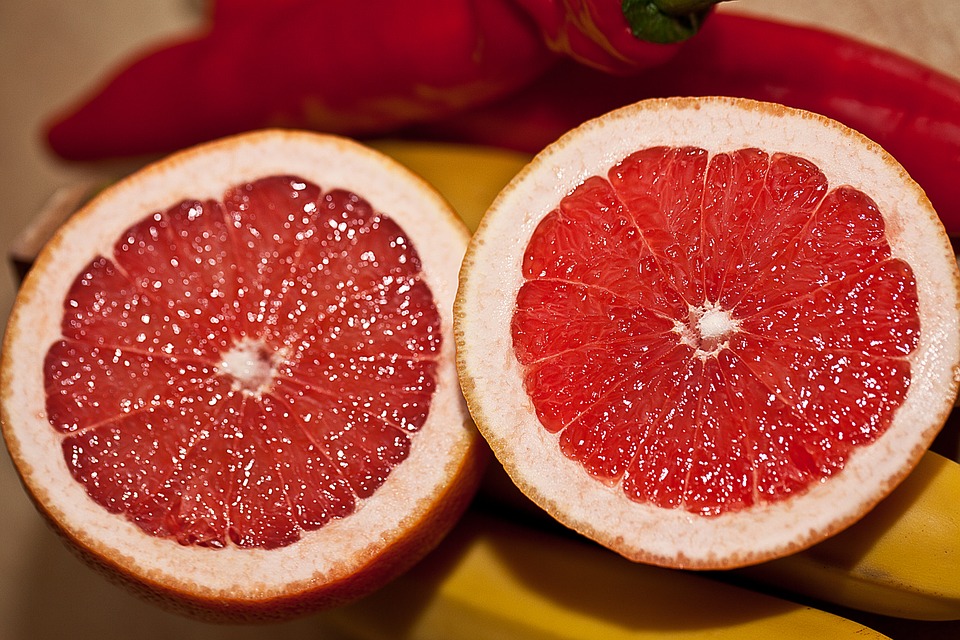

Grapefruit, raw, white, California : 37.00kcal (2%RDA)ġ0. Grapefruit juice, pink or red, with added calcium : 38.00kcal (2%RDA)ĩ. Grapefruit juice, pink, raw : 39.00kcal (2%RDA)Ĩ. Grapefruit juice, white, raw : 39.00kcal (2%RDA)ħ. Grapefruit juice, white, frozen concentrate, unsweetened, diluted with 3 volume water : 41.00kcal (2%RDA)Ħ.

Grapefruit, raw, pink and red, all areas : 42.00kcal (2%RDA)ĥ. Grapefruit juice, white, canned, sweetened : 46.00kcal (2%RDA)Ĥ. Grapefruit, sections, canned, light syrup pack, solids and liquids : 60.00kcal (3%RDA)ģ. Grapefruit juice, white, frozen concentrate, unsweetened, undiluted : 146.00kcal (7%RDA)Ģ. Top ten calories in grapefruit products high in energyīelow is a summary list for the top ten calories in grapefruit items ranked by the amount or level of energy in 100g.ġ. The percentage of the recommended daily allowance (RDA) for energy is based on a 2000 kcal RDA level for a mature adult. This corresponds to an RDA percentage of 5%. For a typical serving size of 1.000 cup (or 247.00 g) the amount of Energy is 96.33 kcal. 39.00 kcal of energy per 100g, from Grapefruit juice, pink, raw corresponds to 2% of the energy RDA. The basic type of calories in grapefruit is Grapefruit juice, pink, raw, where the amount of energy in 100g is 39.00 kcal. Having a type of fruit that fits each color scheme is a fun and simple way to ensure you're eating a variety," London says.Welcome to the nutritional energy content in 18 different types of calories in grapefruit, ranging from 146.00 kcal to 30.00 kcal per 100g. "You can characterize fruit by pigment -green, yellow, orange, red, purple. One easy way to change that and hike your fruit (and veggie!) count is to literally eat the rainbow each day.

Yet according to the Centers for Disease Control and Prevention (CDC), only 10% of Americans eat enough fruit - about 1½ to 2 cups daily.
#1 GRAPEFRUIT CALORIES PLUS#
Fruit also supports good digestion ( thanks to the fiber), strong immunity, proper hydration (fruit has a high water content plus fluid-regulating electrolytes) and energy. Fruit can also lower your overall mortality risk, according to a recent meta-analysis.

Research shows shows that eating a minimum of four to five servings per day can help boost mood, and may also reduce your risk for heart disease, obesity and type 2 diabetes. "Including more fruit in your everyday meals and snacks is one of my top tips for making more nutritious food choices that will ultimately contribute to good overall health, weight maintenance, and healthy weight loss if you're seeking it," says Jaclyn London, R.D., nutrition consultant, host of the podcast The Business of Wellness, and author of Dressing on the Side (& Other Diet Myths Debunked). If there's one thing we could all benefit from a little more of, it's fresh produce! That's because fruits and vegetables are filled with an array of vitamins, minerals and antioxidants that help keep our body running from head-to-toe.


 0 kommentar(er)
0 kommentar(er)
